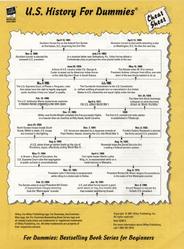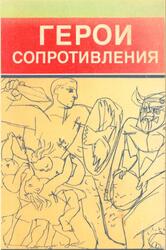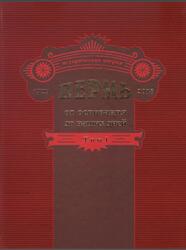U.S. History For Dummies, Wiegand S., 2001.
This book isn't a textbook. It focuses on people: famous, infamous, and obscure. It gives you a basic foundation of information about U.S. history. You can also use it as a handy reference. Haul it off the shelf to look up a fact, to settle an argument, or to store up ammunition for that next conversation with your know-it-all brother-in-law.

Discovering America the Viking Wag.
All Vikings were Norsemen, but not all Norsemen were Vikings. Viking meant to go raiding, pirating, or exploring. Although some of the Scandinavians of 1.000 years ago surely did all of those things, most of them stayed in Scandinavia and fished or farmed.
For about 300 years, the Norsemen who were Vikings conquered or looted much of western Europe and Russia. In the ninth and tenth centuries, sailing in ships was made speedy and stable by the addition of keels. Consequently, the Vikings journeyed west, not so much for loot as for new lands to settle.
Hop scotching from the British Isles to the Shetland Islands to the Faroe Islands, the Vikings arrived in Iceland about A.D. 870. But Iceland didn't offer a whole lot of good land, and it got crowded pretty quickly. Slightly more than 100 years later, a colorful character known as Eric the Red. who was in exile from Iceland for killing a man. discovered Greenland and led settlers there around 985.
Like many things in human history, the Vikings' first visits to the North American continent were by accident. The first sighting of the New World by a European probably came around 987. when a Viking named Bjarni Herjolfsson sailed from Iceland to hook up with his dad and missed Greenland. Herjolfsson wasn’t impressed by what he saw from the ship, and he never actually set foot on land before heading back to Greenland.
Contents.
Introduction 1.
Part I: Getting There, Getting Settled, and Getting Free.
Chapter 1: Before the Beginning: 14,000 B.C.-A.D. 1492.
Chapter 2: Columbus Discovers the Bahamas: 1492-1607.
Chapter 3: Pilgrims' Progress: The English Colonies, 1607-1700.
Chapter 4: Old Grudges in a New World: 1700-1763.
Chapter 5: Revolting Developments: 1763-1775.
Chapter 6: Yankee Doodlin': 1775-1783.
Chapter 7: Blueprints and Birth Pains: 1783-1800.
Part II: Grouting Pains.
Chapter 8: "Long Tom" Becomes President: 1800-1809.
Chapter 9: One Weird War: 1809-1815.
Chapter 10: The Good, the Bad. and the Very Ugly: 1815-1828.
Chapter 11: The Influences of Andrew Jackson: 1829-1844.
Chapter 12: War, Gold, and a Gathering Storm: 1845-1860.
Chapter 13: A Most Uncivil War: 1861-1865.
Chapter 14: Putting It Back Together: 1865-1876.
Part III: Coming of Age.
Chapter 15: Growing Up: 1876-1898.
Chapter 16: Growing Out: 1899-1918.
Chapter 17: Bathtub Gin, Jazz, and Lucky Lindy: 1919-1929.
Chapter 18: Uncle Sam's Depressed: 1930-1940.
Chapter 19: The World at War: 1941-1945.
Part IV: America in Adulthood.
Chapter 20: The Fast Fifties: 1946-1960.
Chapter 21: Camelot to Watergate: 1961-1974.
Chapter 22: Hold the Malaise, or Ayatollah So: 1975-1992.
Chapter 23: The Future is Now: 1993-2000].
Part V: The Part of Tens.
Chapter 24: The 10 Best — and 10 Worst — Presidents.
Chapter 25: Ten Historical Events That Probably Never Happened.
Chapter 26: Ten Inventions That Changed Life as We Know It.
Chapter 27: Ten Events That Defined American Culture.
Part VI: Appendixes.
Appendix A: Preamble to the United States Constitution.
Appendix B: The Bill of Rights: Amendments 1-10 of the Constitution.
Appendix C: The Declaration of Independence.
Appendix D: The Gettysburg Address.
Index.
Купить .
Теги: учебник по истории :: история :: Wiegand











